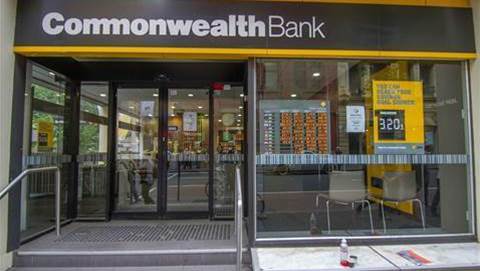Insurance giant IAG has lifted the lid on a small arsenal of new data and IT initiatives now underway including the development of a computer vision system to triage repairs and the use of machine learning in pricing.
The bevvy of new projects came as the underwriter’s senior management bowled-up conspicuous achievements of its recently renewed IT executive and its IAG Labs venture to investors during its 2018 results full year presentation.
Few enterprises are as hamstrung by legacy as well established insurers – and there were no tears being shed for systems of old.
Core renewal
With the core of any insurer being its claims system and ratings engines (to calculate pricing for risk) IAG managing director Peter Harmer wasted no time in driving home the message that legacy platforms are swiftly headed to the big skip in the sky.
“We have now decommissioned 27 technology applications and the first major claims system will be decommissioned in the second quarter of this year,” Harmer said.
Having recently restored its CIO function and significantly bolstered its in-house technology ranks and capacity, IAG’s digital-first strategy is to swiftly and cleanly consolidate its architecture, applications and development capability.
The result it is looking for is the shedding of legacy encumbrance on execution and performance, while rapidly boosting customer engagement, automation and self-service to take the drudgery, hassle and expense out of processing claims.
This, IAG said, will “reduce organisational complexity by consolidating technology platforms, harmonising products, simplifying processes and systems, and executing the technology strategy.”
The insurer told investors there has been “significant progress with the consolidation and simplification of IAG’s core technology systems, under which all claims move to a single version of the Guidewire ClaimCenter platform.”
Claiming success
It cited key achievements around this as including “all motor and property claims in Australia now being lodged on the platform” while “the long tail claims business” was moving to a “new operating model ahead of system delivery in FY19.”
Claimant return-to-work rates “through greater matching of capability to claim complexity” were also up, IAG said.
Claims made through the legacy systems now under migration were down by half “commencing the pathway to decommissioning those systems.”
At the same time planning and design was now underway for the “consolidation and simplification” of IAG’s policy systems.
Labs in overdrive
Meanwhile, IAG’s recently created ‘Customer Labs’ initiative – a hybrid of a customer experience R&D workshop and rapid development practice – has been churning out internal and external products and services.
Harmer said following work on a customer segmentation model, Labs had started “an analysis of the correlation between advocacy and customer behaviour” which will “assist in identifying and prioritising IAG’s investment into initiatives that improve customer experience”.
On the data front, Harmer called out IAG’s win at the 2018 Red Hat Innovation Awards as an international validation of its open source approach and said it was “well-advanced in transitioning its data platform onto a scalable, flexible and cost-efficient cloud capability.”
Analyse this
If there was ever a welcoming ghetto for analytics nerds outside economics, IAG again proved that insurance and risk is where it’s at.
Aside from the ubiquitous corporate accessory of chatbots, IAG is leaning on “cognitive capabilities” and AI to harness computer vision (machines that see stuff like broken windows or a burnt cinder where a house used to be) for a system to “triage repairs and automate reserving”.
“During 2H18, the redesign of the motor recovery journey delivered the first minimum viable product: tracking motor repair status and associated customer notification,” IAG said.
“Positive feedback from customers and repairers has validated ongoing scaling of this initiative. Work has also commenced on redesigning the home recovery journey.”
Paying up
Buying its way into the innovation and disruption game is also paying off for IAG, especially when it’s considerably cheaper and quicker than trying to build-your-own.
The insurer’s combustible brand in that space is Firemark Labs, an insurance tech skunkworks that straddles injecting innovation zeal into a big corporate and being an angel investor in start-ups that might otherwise create material challenges down the line.
According to IAG’s earlier official material, Firemark Labs is there to “draw-on external expertise and resources to spark new ideas that will enhance customer experience” for the likes of NRMA Insurance.
But, being backed by IAG to the tune of $75 million, Firemark Ventures (that’s the punting arm of the business) isn’t afraid to take a calculated risk in backing emerging markets for underwriting – like the gig, sorry, sharing economy.
In May Firemark took a stake in Airtasker on the basis it was “part of its strategy to enhance customer experience and generate growth through investing in partners with the potential to disrupt the insurance sector.”
Share risk, spread returns
The Airtasker play is a long way from feelgood philanthropy for IAG though.
Especially when there are around two million people on that platform possibly unsure of how to turn a hobby or sideline into a professional service that may be looking for a bit of well-crafted indemnity.
“IAG has been at the forefront of providing new insurance solutions to help protect participants in the sharing economy from emerging risks, including being the first Australian insurer to offer tailored protection for Uber drivers and Airbnb hosts,” Julie Batch, IAG’s chief customer officer boomed in May this year.
“We see significant value in the platform and enormous potential for us to work together to find new and innovative ways to reduce risk and improve safety for its members, while connecting our customers to Airtasker’s services.”
Tow truck drivers and panel beaters: who needs them anyway?
IAG posted adjusted net profit after tax of $923 million for the full year ended June 30th 2018, down from $929 million for the previous corresponding period.


























